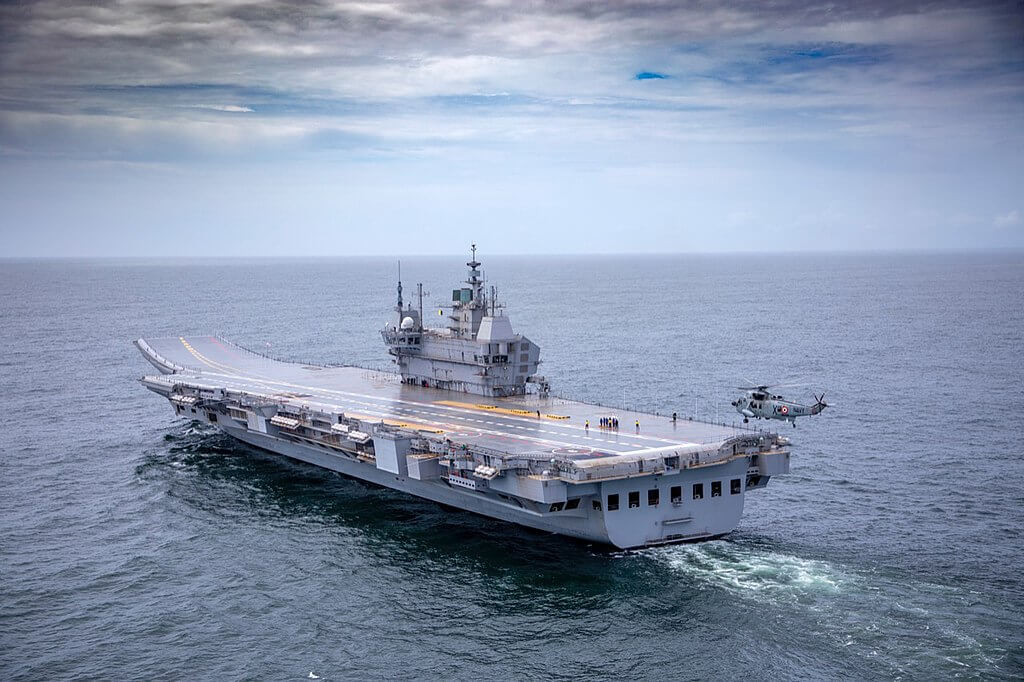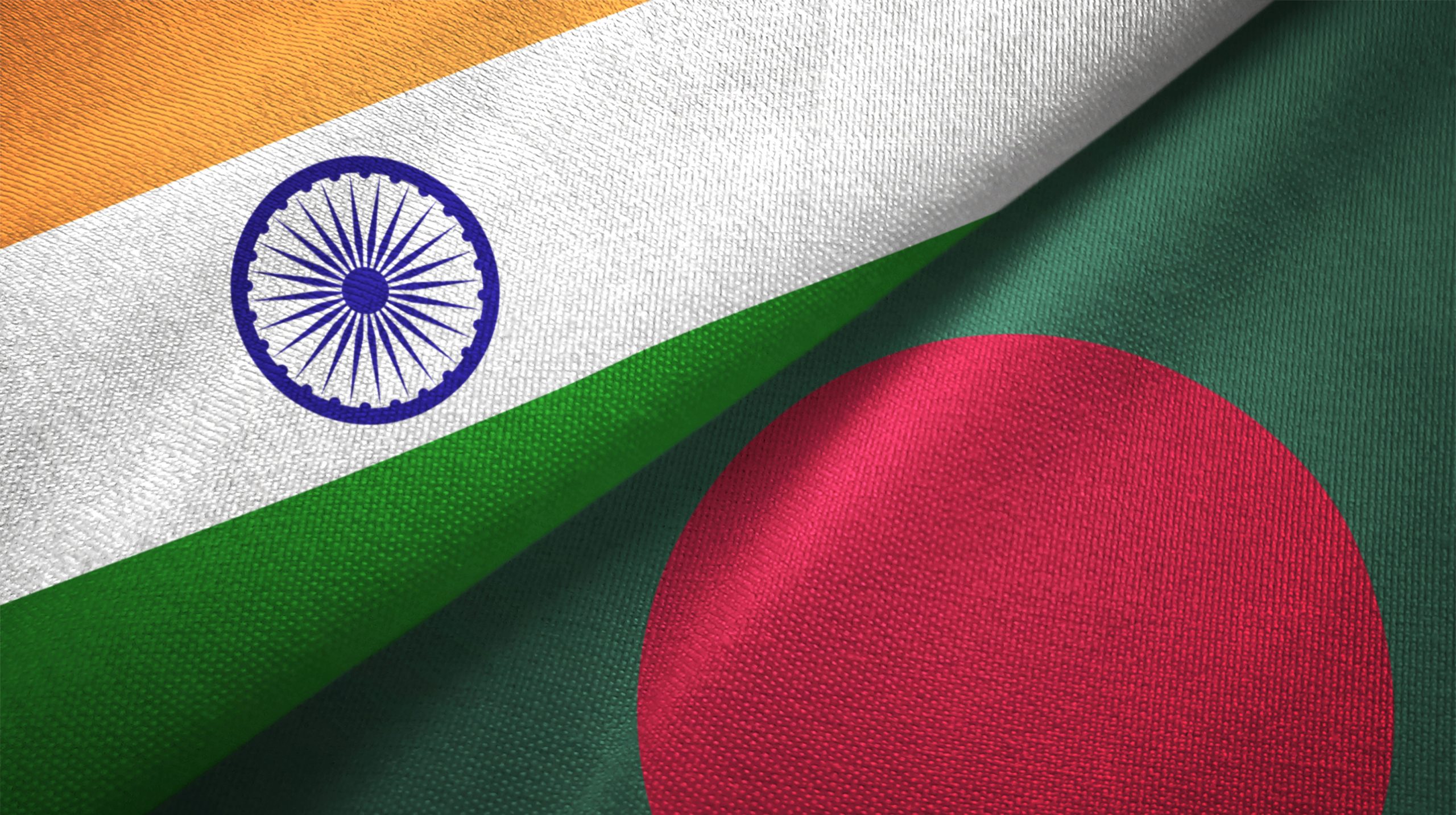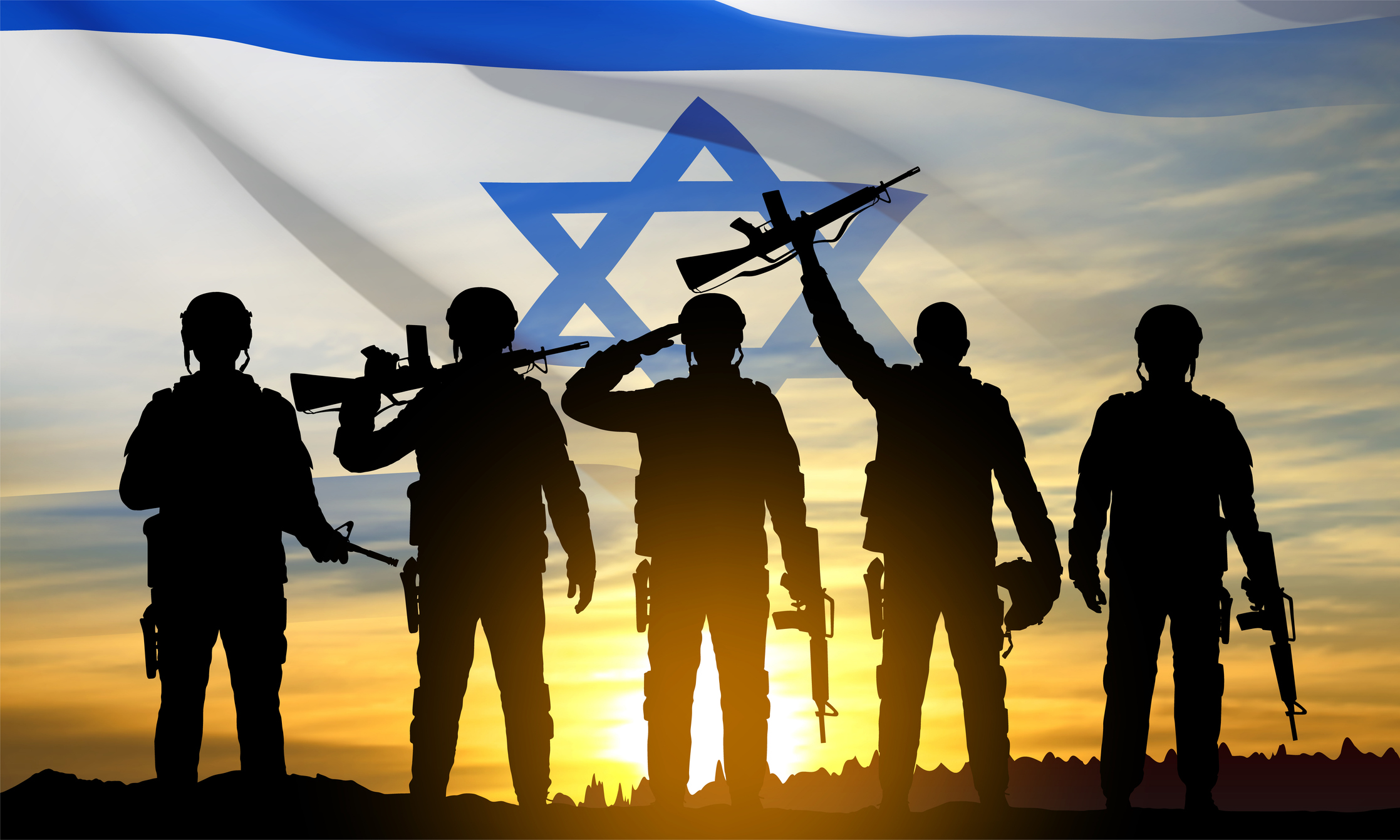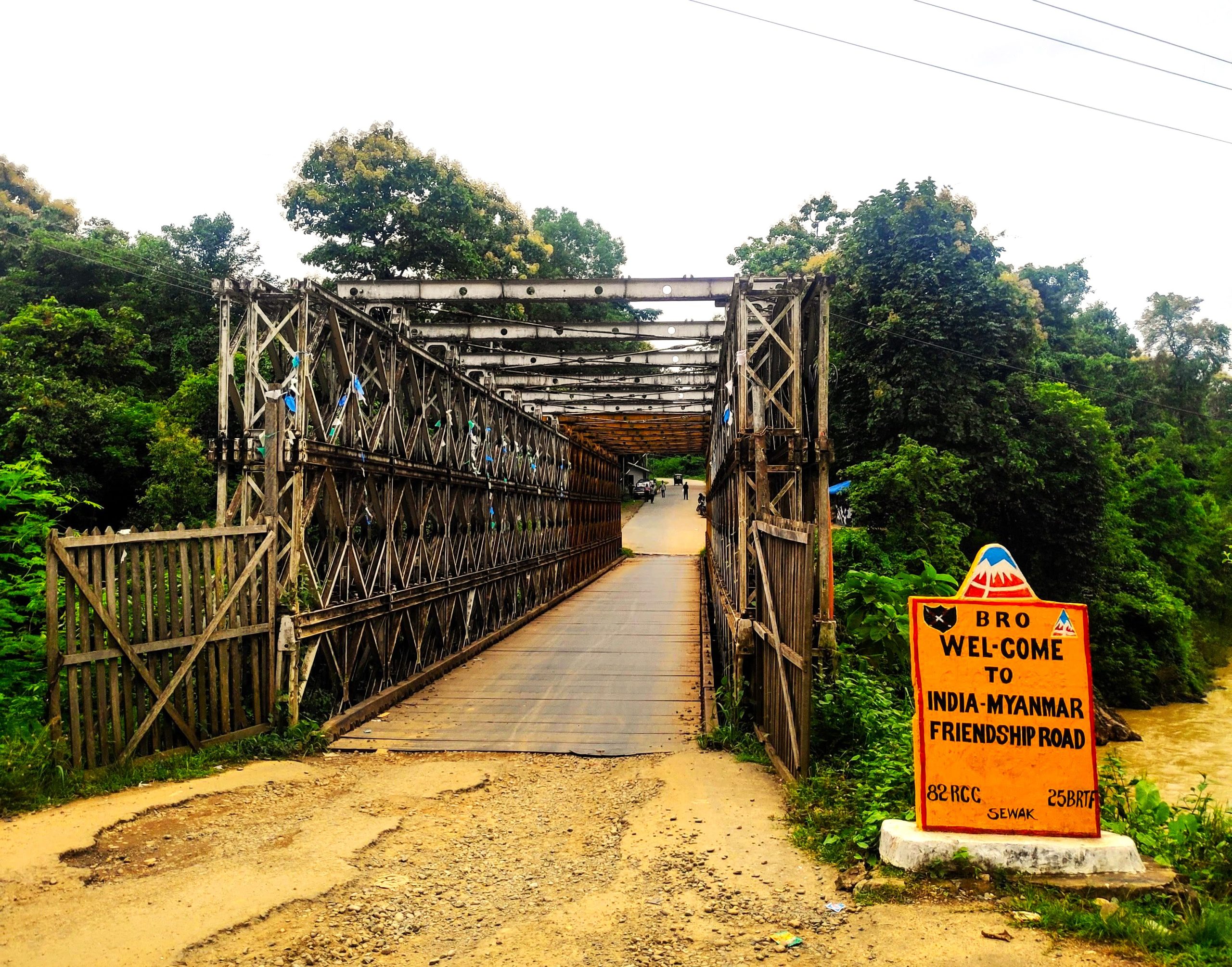
INS Vikrant – A Naval Liability
 Mon, 09 Aug 2021
| Reading Time: 4 minutes
Mon, 09 Aug 2021
| Reading Time: 4 minutes

INS Vikrant – A Naval Liability
Bharat Karnad
Indian warship building has finally come a full circle. It was in the 1780s, that impressed by the man-o’-wars in the 100 ton-1,000 ton range made from hardy Malabar Teak by a team of shipwrights under the Parsi master builder Luwji Nusserwanji Wadia at the East India Company’s shipyard in Bombay, the Royal Navy ordered a number of frigates from the Wadias for its frontline service. Some 250 years later, the Kochi shipyard has turned out what will doubtless be the flagship of the Indian Navy — a 40,000-ton aircraft carrier, the new INS Vikrant, presently undergoing sea trials.
Still, the country is not all there yet. Just as the 1852 HMS Cornwallis type of ships of Bombay pedigree were, in the heyday of Pax Britannica, equipped by 3-ton guns wrought in Britain, most of the high value weapons and other hardware on board Vikrant are of foreign origin as are the aircraft designated to fly off its deck.
So, we are still stuck with that inconvenient reality since the follow-on to the Leander-class frigate, the Godavari-class, were built at Mazgaon in the late 1970s, that while 80-85% of the carrier is indigenous, it is more by weight than by value. The 15-20% of the weight made up by the shipborne guns, missiles, sensors, and data/information fusion, navigation and other paraphernalia enhancing situational awareness constituting the high value end of technology and the bulk of the cost of the aircraft carrier, are all imported.
That said, the capability to construct aircraft carriers is no mean achievement. It is just as consequential as India’s capacity to design and build its own nuclear-powered missile-firing submarines (SSBNs). Except the Indian aircraft carrier-making capability is coming to fruition just when the age of the large ships is coming to a close. The Wadia shipbuilders never transitioned from sail to steam-powered ships and hence slipped into a backwater. There’s every danger that unless the Indian Navy and shipyards adjust fast to the naval requirements of the future, they too could soon become relics.
Which brings this discussion to the operational value of aircraft carriers in the era of supersonic and hypersonic cruise missiles and remotely piloted autonomous weapons platforms. Here I can do no better than reprise the arguments I made against the aircraft carrier in my last two books — on pages 350-351 in ‘Why India is Not a Great Power (Yet)’ published in 2015 and on pages 373-376 in ‘Staggering Forward: Narendra Modi and India’s Global Ambition’ released in 2018.
There are three main negatives of the aircraft carrier, other than their extreme vulnerability, as mentioned to supersonic and, soon, hypersonic anti-ship cruise missiles that will be in the employ of all potential adversary navies.
- Aircraft carriers are prized targets, both because of their symbolic value and enormous cost — the Vikrant price tag is US$ 8-10 billion with its full complement of strike aircrafts and early warning and anti-submarine warfare helicopters. So, the enemy will prioritise their destruction early in a war by any and all means — strikes by land-based and carrier-based combat aircraft, by ballistic missiles, and cruise missiles launched from air, ships and submarines, and submarine-fired heavy torpedoes. In the event, an aircraft carrier at sea is all but unprotectable considering the kind of guided ordnance that can be fired at it, not just singly but in salvoes from far too many firing points, not all of which can be adequately covered at any given time.
- Even so, by the very nature of this ship, a navy would mobilize a dense, layered, defence for its protection. At a minimum, this will mean that six to eight frigates and missile destroyers and a submarine used as picket will need to be deployed as an escort flotilla for a single carrier. Unless, the Indian Navy grows to have some 300 capital ships, taking away a large fraction of the current naval strength of some 50 capital ships just to protect aircraft carrier assets makes no sense whatsoever, especially as such protection will result in a seriously thinned-out sea presence of the navy even in the proximal waters of the Indian Ocean. With Vikramaditya and Vikrant in the Eastern and the Western Fleets respectively, say, as many 16 surface combatants and two Kilo-class submarines as pickets will instantly become unavailable to the navy for any of a host of other missions in case of hostilities. This to say that deploying carriers will prevent a very large naval force fraction from becoming available for a range of offensive and defensive sea control and sea denial missions.
- For the cost of a single aircraft carrier the Indian Navy could have secured as many as 3-4 each of the multi-purpose frigates, missile destroyers/mine sweepers and diesel submarines, or a mix of any of these war ships. In a time of financial austerity, moreover, it makes more sense to have, for the same amount of money, a large number of different types of warships to augment fleet strength than one or two flashy aircraft carriers.
Serious doubts have begun to be voiced in the US naval quarters and security enclaves generally about the survivability and hence the continued utility about the large 100,000-ton Gerald Ford-class nuclear powered aircraft carriers for many of the same reasons adduced above.
But let’s assume the Indian Navy is, in fact, able to protect its carriers as it claims, the question to ask is whether it serves the national security interests better for two aircraft carrier groups to be able to hold sway over two mobile, circular areas, each of 250 miles in radius centered on the carriers in the vast expanse of the Indian Ocean, what to speak of the immeasurably vaster Indo-Pacific, than a whole bunch of smaller (2-3 ship) flotillas of frigates, missile destroyers and submarines singly or in packs, creating hell for adversary navies? Obviously, the latter is the more cost-efficient and operationally versatile option.
Surely, an objective analysis will show what I long ago concluded that INS Vikramaditya, the new INS Vikrant and the third carrier, INS Vishal (whenever its construction is approved) are high cost sitting ducks ready to be shot up at will by the enemy, and a real all-round liability for the Indian Navy and the country.
Image Reference – IAC-1 Vikrant going for its maiden sea trials – INS Vikrant (2013) – Wikipedia
Disclaimer
The opinions expressed in this article are the author’s own and do not reflect the views of Chanakya Forum. All information provided in this article including timeliness, completeness, accuracy, suitability or validity of information referenced therein, is the sole responsibility of the author. www.chanakyaforum.com does not assume any responsibility for the same.
Chanakya Forum is now on . Click here to join our channel (@ChanakyaForum) and stay updated with the latest headlines and articles.
Important
We work round the clock to bring you the finest articles and updates from around the world. There is a team that works tirelessly to ensure that you have a seamless reading experience. But all this costs money. Please support us so that we keep doing what we do best. Happy Reading
Support Us





















POST COMMENTS (12)
Why India Needs More Aircraft Carriers - TDW %
To Counter China, India Wants Extra Plane Carriers - Jaraa'id
V S SANKARA NARAYANAN
Dev
Rama krishna
Dr. Raju EVR
Tejas Sheth
John Dapper
Bhavil
KJ
VK
Ashutosh Nangia